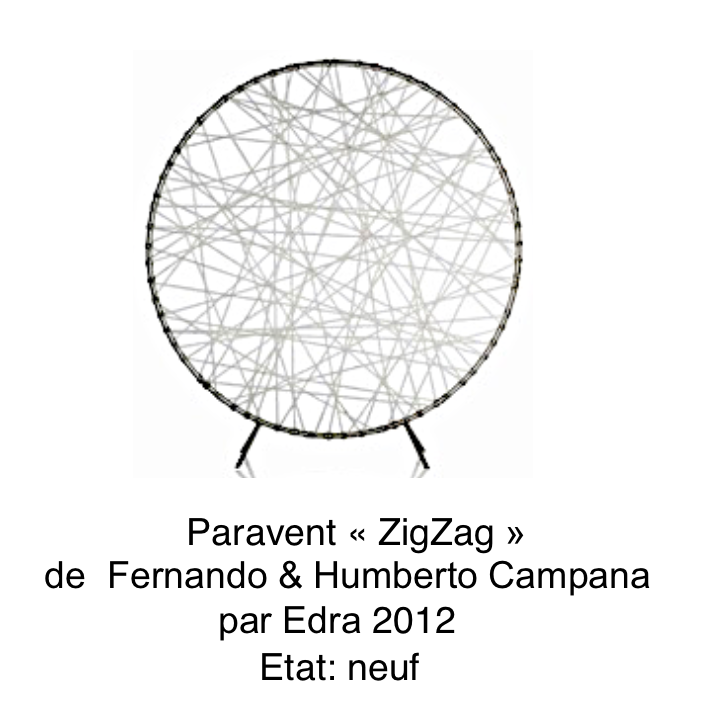Paravent
« ZigZag »
Fernando et Humberto Campana
Année 1995
Edra
Etat: Neuf
Prix sur demande

Description:
Edra’s « Zig Zag folding screen », designed by the Campana brothers, consists of a circular metal structure shaped in a mould, sandblasted and painted in metallic silver. The surface is made up of an interweaving of special hollow plastic tubes knotted on the frame.
Le « Zig Zag paravent » de chez Edra, dessiné par les frères Campana, se compose d’une structure circulaire en métal modelé au moule, sablé et peint en argent métallisé. La surface se constitue d’un entremêlement de tubes spéciaux, creux et en matière plastique, noués sur le cadre.
DÉTAILS TECHNIQUES :
Couleur : Rose
Finition : Tube peinture argentée / PVC
Dimensions : D 180cm
Poids : 8 kg
Fernando et Humberto Campana:
Humberto Campana, lawyer and Fernando Campana, architect, have been working together in San Paolo since 1983 in the field of artistic design. They came to the forefront in 1989 with the exhibition of decorative objects with the provocative title « Gli inconfortabili » (« The uncomfortable ones »), destined to become, more than functional objects, political objects. To their radical vision contributes, the use of poor materials and industrial waste. The « handmade » represents in a poor country the possibility of social redemption. However, their goal is to find a Brazilian way to design, avoiding European colonization. In Italy, they took part in the exhibition « Viaggio in Italia » (« Journey to Italy »), at Abitare il Tempo in Verona in 1994 and in 1995 in the exhibition « Il Brasile fa anche design » (« Brazil also does design ») at the Brazilian consulate in Milan. In 1998, the Moma in New York dedicated an exhibition to them « Progetto 66 » with Ingo Maurer.
Humberto Campana, avocat et Fernando Campana, architecte, travaillent ensemble à San Paolo depuis 1983 dans le secteur du design artistique. Ils sont arrivés sur le devant de la scène en 1989 avec l’exposition d’objets de décoration au titre provocateur « Gli inconfortabili » (« Les inconfortables »), destinés à devenir, plus que des objets fonctionnels, des objets politiques. A leur vision radicale contribue, l’utilisation de matériaux pauvres et de déchets industriels. Le « fait main » représente dans un pays pauvre la possibilité de rachat social. Leur but est toutefois de trouver une voie brésilienne au design, en évitant la colonisation européenne. En Italie, ils ont participé à l’exposition « Viaggio in Italia » (« Voyage en Italie »), à Abitare il Tempo de Vérone en 1994 et en 1995 à l’exposition organisée dans le consulat brésilien de Milan « Il Brasile fa anche design » (« Le Brésil fait aussi du design »). En 1998, le Moma de New York leur a consacré une exposition « Progetto 66 » avec Ingo Maurer.
